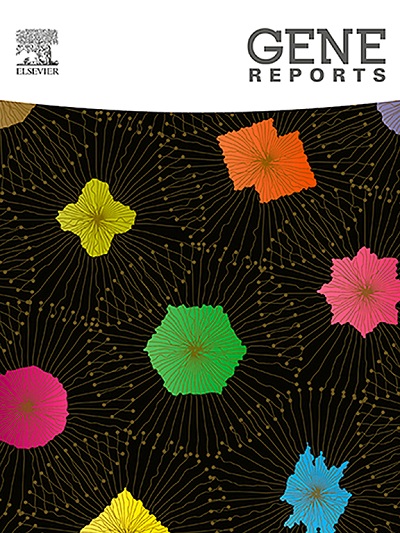Differential expression and pathological implications of Linc01089 and Linc01578 in acute myeloid leukemia
IF 1
Q4 GENETICS & HEREDITY
引用次数: 0
Abstract
Background
Acute myeloid leukemia (AML) is a type of blood cancer that has an outlook emphasizing the importance of finding treatment targets. This research delves into the differences in expression of different types of coding RNAs in AML, specifically focusing on Linc01089 and Linc01578.
Methods
We carried out an analysis using AML datasets to pinpoint non-coding RNAs showing significant expression differences. Subsequently, we used PCR (qPCR) on samples from AML patients and healthy individuals to validate our discoveries. Furthermore, we used weighted gene co-navigation analysis (WGCNA) to investigate the pathways and key genes associated with these non-coding RNAs.
Results
Our analysis revealed a decrease in the levels of Linc01089 and Linc01578 in AML samples compared to those from individuals. The qPCR validation supported these findings by showing expression levels in AML patients. Because of WGCNA, we found pathways related to disease, such as mismatch repair, cell cycle regulation, and p53 signaling, that these coding RNAs might affect. Additionally, we figured out 20 genes closely linked to Linc01089 and Linc01578. We established a protein-protein interaction (PPI) network to gain a deeper understanding of their roles in AML.
Conclusions
While proposing their involvement in cancer-causing pathways, our study emphasizes the reduction of Linc01089 and Linc01578 in AML cases. This discovery lays the groundwork for exploration into how these lncRNAs could serve as targets for interventions in AML.
求助全文
约1分钟内获得全文
求助全文
来源期刊

Gene Reports
Biochemistry, Genetics and Molecular Biology-Genetics
CiteScore
3.30
自引率
7.70%
发文量
246
审稿时长
49 days
期刊介绍:
Gene Reports publishes papers that focus on the regulation, expression, function and evolution of genes in all biological contexts, including all prokaryotic and eukaryotic organisms, as well as viruses. Gene Reports strives to be a very diverse journal and topics in all fields will be considered for publication. Although not limited to the following, some general topics include: DNA Organization, Replication & Evolution -Focus on genomic DNA (chromosomal organization, comparative genomics, DNA replication, DNA repair, mobile DNA, mitochondrial DNA, chloroplast DNA). Expression & Function - Focus on functional RNAs (microRNAs, tRNAs, rRNAs, mRNA splicing, alternative polyadenylation) Regulation - Focus on processes that mediate gene-read out (epigenetics, chromatin, histone code, transcription, translation, protein degradation). Cell Signaling - Focus on mechanisms that control information flow into the nucleus to control gene expression (kinase and phosphatase pathways controlled by extra-cellular ligands, Wnt, Notch, TGFbeta/BMPs, FGFs, IGFs etc.) Profiling of gene expression and genetic variation - Focus on high throughput approaches (e.g., DeepSeq, ChIP-Seq, Affymetrix microarrays, proteomics) that define gene regulatory circuitry, molecular pathways and protein/protein networks. Genetics - Focus on development in model organisms (e.g., mouse, frog, fruit fly, worm), human genetic variation, population genetics, as well as agricultural and veterinary genetics. Molecular Pathology & Regenerative Medicine - Focus on the deregulation of molecular processes in human diseases and mechanisms supporting regeneration of tissues through pluripotent or multipotent stem cells.
 求助内容:
求助内容: 应助结果提醒方式:
应助结果提醒方式:


